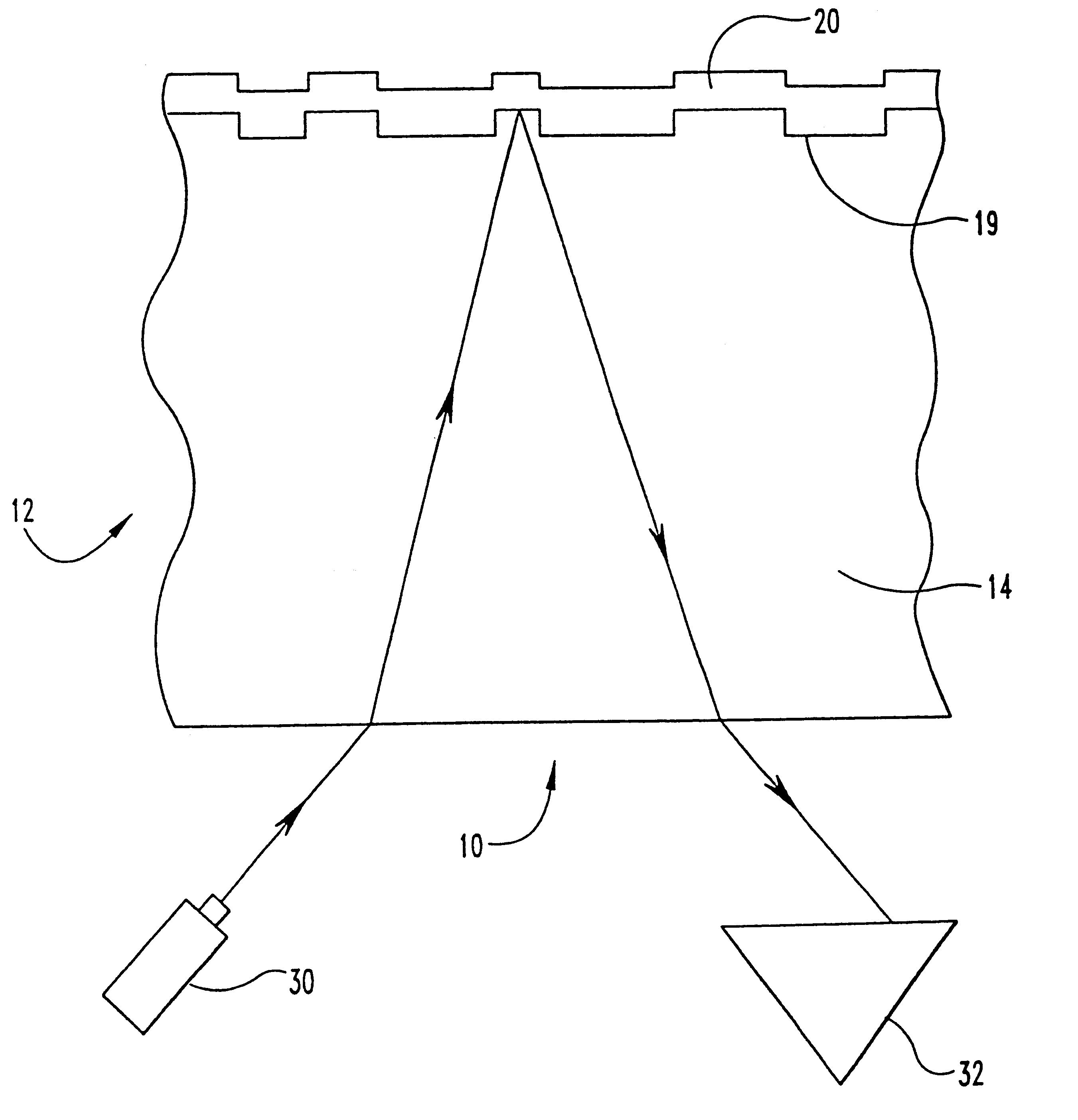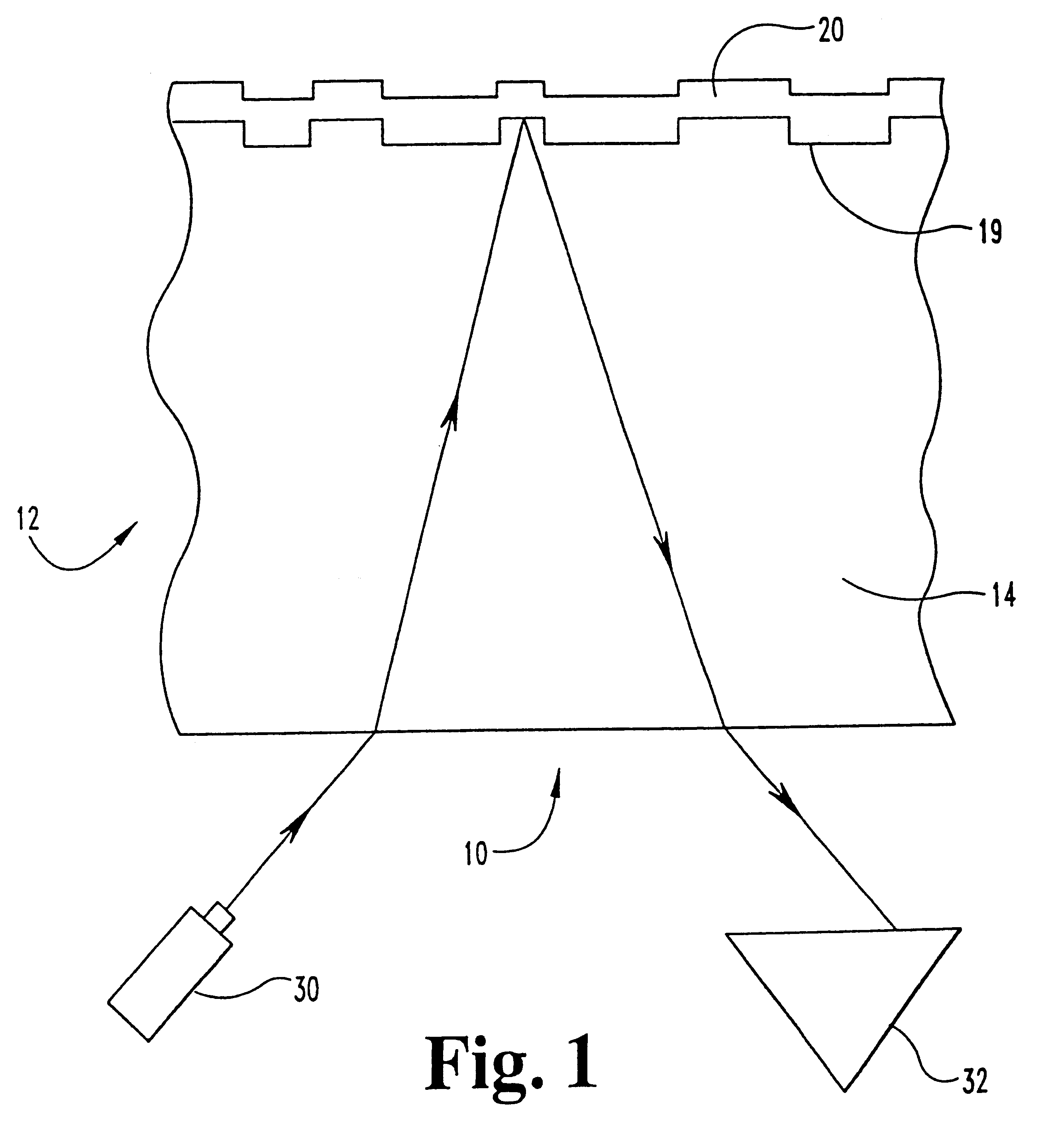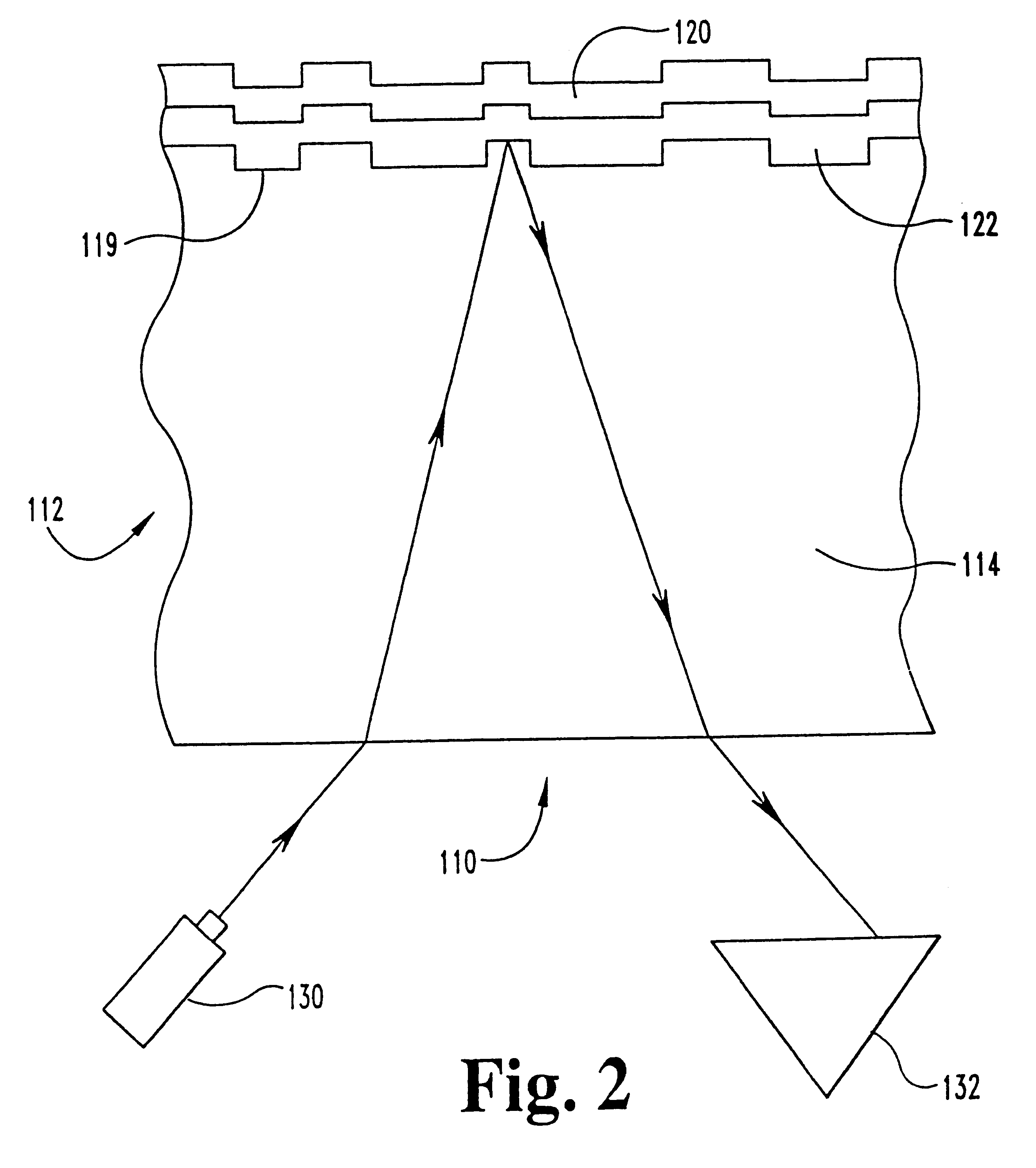Metal alloys for the reflective or the semi-reflective layer of an optical storage medium
a technology of optical storage medium and metal alloy, which is applied in the direction of record information storage, synthetic resin layered products, etc., can solve the problems of reducing the life of the disc, so as to achieve high reflectivity and corrosion resistance, reduce the cost, and ensure the effect of quality
- Summary
- Abstract
- Description
- Claims
- Application Information
AI Technical Summary
Benefits of technology
Problems solved by technology
Method used
Image
Examples
example 1
An alloy composition of silver with approximately 1.2 atomic percent chromium and approximately 1.0 atomic percent zinc will have a reflectivity of approximately 94 to 95 percent at the wavelength of 800 nanometers and a reflectivity of approximately 93 to 94 percent at the wavelength of 650 nanometers and a reflectivity of approximately 86 to 88 percent at the wavelength of 400 nanometers with the film thickness at about 60 to 100 nanometers.
example 2
A silver-rich alloy with 1.5 a / o percent of manganese, 0.8 a / 0 percent of copper will have a reflectivity of approximately 94 to 95 percent at 650 nanometers wavelength. If the thickness of the thin film is reduced to the 8 to 12 nanometers range, the reflectivity will be reduced to the 18 to 30 percent range applicable for DVD-9's semi-reflective layer. Adding a low concentration of deoxidizer such as lithium can further simplify the manufacturing process of the starting material of the thin film. As silver has a tendency to dissolve some oxygen in the solid state which tends to lower the reflectivity of the alloy, the added lithium will react with the oxygen and lessen the degree of oxygen's impact to reflectivity. The desirable range of lithium is in the approximate range of 0.01 percent to 5.0 atomic percent, with the preferred range from about 0.1 to 1.0 a / o percent.
example 3
A silver based alloy with about 0.5 a / o percent of nickel and about 0.5 a / o percent of zinc will have a reflectivity of approximately 95 percent at the wavelength of about 650 nanometers at a thickness of 60 to 70 nanometers and is suitable for any high reflectivity application in an optical information storage medium.
PUM
| Property | Measurement | Unit |
|---|---|---|
| thick | aaaaa | aaaaa |
| distance | aaaaa | aaaaa |
| length | aaaaa | aaaaa |
Abstract
Description
Claims
Application Information
 Login to View More
Login to View More - R&D
- Intellectual Property
- Life Sciences
- Materials
- Tech Scout
- Unparalleled Data Quality
- Higher Quality Content
- 60% Fewer Hallucinations
Browse by: Latest US Patents, China's latest patents, Technical Efficacy Thesaurus, Application Domain, Technology Topic, Popular Technical Reports.
© 2025 PatSnap. All rights reserved.Legal|Privacy policy|Modern Slavery Act Transparency Statement|Sitemap|About US| Contact US: help@patsnap.com



